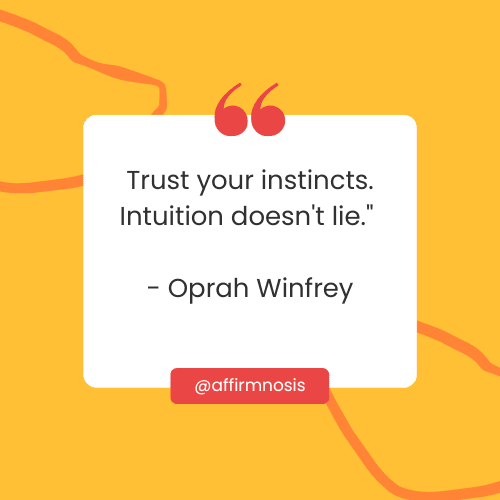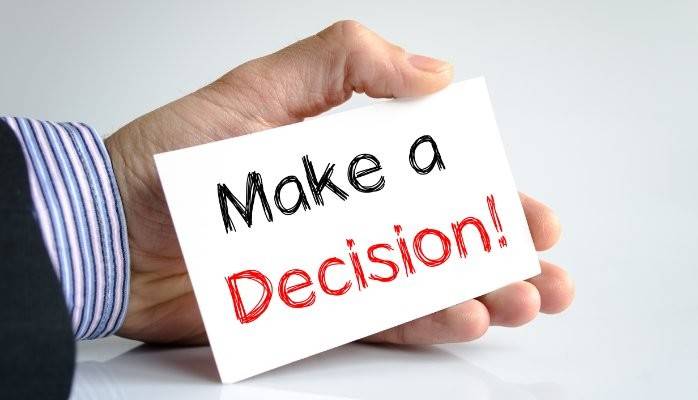Making decisions is an integral part of our daily lives. From the moment we wake up to the time we go back to bed, we are constantly faced with choices that can have a significant impact on our personal or professional lives.
It could be as simple as choosing what to wear for the day or deciding which project to prioritize at work. However, decision-making becomes more complex when there are multiple options and when the consequences of those decisions can have long-term effects.
The importance of decision-making cannot be overstated. Good decision-making skills not only enhance our personal lives but also our professional lives.
Effective decision-making leads to better problem-solving skills, enhances productivity and efficiency, and ultimately helps us achieve our goals. On the other hand, poor decision-making can lead to undesirable consequences such as missed opportunities, increased risk, financial loss, and even reputational damage.
This article focuses on providing you with strategies for making better decisions that you can apply in your personal and professional life. The strategies outlined here will help you make informed decisions that align with your values and objectives.
Overview of Strategies for Making Better Decisions
The process of making a sound decision involves several steps that help an individual weigh alternatives before making a final choice.
These steps include identifying the problem at hand, gathering relevant information about it from various sources, analysing available options based on predetermined criteria, considering potential consequences associated with each option, listening to one’s intuition while balancing it with rational thought processes and seeking feedback from others who may be impacted by the decision.
Each step in this process is crucial in its own right but when combined they create an effective framework for making better decisions.
By following these steps systematically individuals will be able to approach any problem or situation logically while minimizing errors due to biases or incomplete information.
In subsequent sections of this article I will explore each strategy in detail providing examples along the way, to illustrate how each step contributes to making sound decisions.
These strategies will serve as a guide for individuals who want to improve their decision-making skills and become more successful in their personal and professional lives.
Identify the Problem
Before making any decision, it is crucial to first identify the problem at hand. Without a clear understanding of the problem, it becomes difficult to make an informed decision that will lead to desirable results. Therefore, identifying the problem is a critical step in any decision-making process.
The Importance of Identifying the Problem Before Making a Decision
The importance of identifying the problem before making a decision cannot be overstated. The reason for this is simple – if you don’t know what you’re trying to achieve, how can you ever hope to achieve it?
By taking time to identify and define the problem in detail, you will be able to direct your efforts towards finding solutions that are most likely to work.
Furthermore, defining the problem can help avoid confusion or misunderstanding later on. If everyone involved in making decisions has a clear understanding of what needs to be solved, then there is less likelihood of disagreements or conflict arising during the decision-making process.
Techniques for Identifying the Problem
There are several techniques that can be used when trying to identify problems. One effective technique is brainstorming.
This involves gathering together individuals who have varying perspectives on an issue and encouraging them to come up with as many potential problems as possible without judgment or critique. This leads towards generating innovative ideas and broadens thinking beyond typical solutions.
Another useful technique for identifying problems is mind mapping. Mind-mapping allows users to visualize complex issues and their interrelationships by arranging them into hierarchical nodes connected by lines and arrows that represent their dependency relationships visually.
By using these techniques combined with detailed analysis of past experiences or feedback from stakeholders regarding previous decisions made under similar circumstances one can guarantee successful identification of underlying issues which need attention before finalizing any conclusive plan.
Identifying problems before making any decisions helps ensure that all parties involved are on the same page regarding the issue under consideration and paves the way for successful resolution of the problem.
Brainstorming and mind-mapping are just two techniques that can be utilized to identify problems, but there are many others out there as well. Take time to identify all possible problems before making a decision to avoid future errors in judgment.
Gather Information: The Key to Informed Decision-Making
Making decisions based on incomplete or inaccurate information can lead to unwanted consequences. Therefore, it is crucial to gather as much relevant information as possible before making a decision.
Not only does this help in making informed decisions, but it also helps in reducing uncertainties and minimizing risks that could stem from the decision.
Techniques for Gathering Information
There are various techniques that can be used for gathering information. Researching is one such technique that involves gathering data from multiple sources such as books, articles, websites and databases.
It’s important to use credible and reliable sources when researching to ensure accuracy of the information being gathered.
Another technique is using surveys which involve collecting opinions or feedback from a sample population regarding a specific topic. Surveys are useful especially when seeking feedback from a large number of people, and since they can be conducted online, they are cost-effective and efficient.
Expert opinions or consultations with professionals in the field can also provide valuable insights when making decisions. Experts who have experience in the subject matter of interest understand the nuances involved and their advice can guide towards more informed decision-making.
Observation is another technique where information is gathered by analyzing occurrences or events happening around the subject matter of interest. Observation allows for real-time data collection hence providing first-hand insights into situations.
Gathering information through research, surveys, expert opinions and observation plays an important role in making informed decisions.
By using these techniques correctly one can obtain accurate data that leads to better decision-making outcomes while minimizing potential risks and uncertainties associated with uninformed choices.
Analyze Options
In the process of decision-making, it’s essential to analyze all available options before arriving at a final decision. Analyzing options allows you to weigh the pros and cons of each possibility and choose the best one that aligns with your goals and values.
By analyzing options, you can also identify any potential roadblocks or risks associated with each option, allowing you to make informed decisions.
The Importance of Analyzing Options Before Making a Decision
Analyzing options is a crucial step in making better decisions because it helps you to determine the optimal choice. By considering multiple possibilities, you can identify drawbacks and benefits that may not be apparent initially.
Additionally, analyzing options helps in avoiding rash choices that are solely influenced by emotions or personal bias. Moreover, analyzing options helps in identifying if there are any biases or gaps in your information gathering process.
Suppose you only consider a few solutions and miss out on others due to unconscious bias; it could lead to an unfavorable outcome.
Therefore, by analyzing multiple alternatives objectively, one can make more informed decisions based on data-driven evidence rather than unchecked assumptions.
Techniques for Analyzing Options
There are various techniques for analyzing different alternatives before making a final decision:
Pros and Cons Lists:
Listing down pros and cons is one of the most common techniques used for option analysis. This technique involves creating two separate lists — one for advantages (pros) and another for disadvantages (cons) – for each possible solution.
Decision Matrix:
A decision matrix is an effective tool that provides structure when comparing several alternatives based on specific criteria. This technique involves creating a grid-like chart where each row represents an option under consideration while columns represent different criteria such as cost effectiveness or risk level.
Mind Mapping:
Mind mapping is another useful technique used when working with complex ideas that have many interrelated parts. This technique involves creating a visual diagram of the different options and their sub-components, providing a bird’s-eye view of the issue at hand.
Scorecards:
Scorecards are used to evaluate each alternative based on predetermined criteria. Each criterion is assigned a score or weight, and each option is rated based on how well it meets each condition.
The pros and cons of each alternative can then be compared by adding up the scores for each option. Analyzing options plays a vital role in making informed decisions that align with your values and goals.
By using techniques such as pros and cons lists, decision matrices, mind mapping, and scorecards, you can compare multiple alternatives objectively before making the best choice.
By taking this step seriously, you will increase your chances of success while minimizing any risks associated with your final decision.
Consider Consequences
Why it’s important to consider consequences before making a decision
When making decisions, it’s crucial to take a step back and consider the potential consequences of your actions. Failing to do so can lead to unexpected outcomes that could have been avoided with careful consideration.
Considering consequences helps you make informed decisions, evaluate risk, and weigh the potential benefits against the drawbacks.
Moreover, taking into account the impact of your decision on others can help you avoid causing harm or negatively impacting relationships.
By anticipating possible outcomes and considering how they may affect different stakeholders involved, you can make more ethical decisions that align with your values.
Techniques for considering consequences: scenario planning and risk analysis
One effective way to consider consequences is through scenario planning, which involves imagining different scenarios based on different assumptions.
By mapping out various future scenarios and their implications, you can identify potential risks and opportunities associated with each outcome.
Another technique is risk analysis, which involves assessing the likelihood of various risks associated with a particular decision.
This approach helps you evaluate how serious each risk is and develop a plan for mitigating them or avoiding them altogether. Both scenario planning and risk analysis are useful tools for considering short- and long-term impacts of decisions on stakeholders.
They also enable you to identify areas where further research or information gathering may be needed. For example, when faced with a business decision such as launching a new product line, scenario planning could involve imagining different market conditions under which the product might be successful or not.
Risk analysis could involve assessing financial risks such as production costs or market demand fluctuations. By taking time to consider potential consequences before making decisions using techniques like scenario planning and risk analysis; we can minimize negative impacts while maximizing benefits differently affected stakeholders involved in our decision-making processes.
Trust Your Gut
When it comes to making decisions, intuition can play a critical role. Intuition can be defined as the ability to understand something instinctively and without the need for conscious reasoning.
It is an important aspect of decision-making because it allows us to make quick judgments based on our past experiences and instincts.

However, intuition alone is not enough when making important decisions. It needs to be balanced with rational analysis.
The role intuition plays in decision-making
Intuition can be especially useful when making decisions based on incomplete or ambiguous information. For example, if you are considering hiring someone for a job but have some concerns that are difficult to quantify or articulate, your gut feeling may help guide you in the right direction.
Additionally, intuition can be helpful when making time-sensitive decisions where there isn’t enough time for rational analysis. However, relying solely on intuition can also lead to poor decision-making.
Sometimes our instincts are influenced by biases or emotions that cloud our judgment and prevent us from seeing the situation objectively. Therefore, it’s crucial to balance intuition with thorough analysis of all available information.
How to balance intuition with rational analysis
To balance your gut feelings with rational analysis, start by analyzing all relevant data regarding the decision at hand. This includes facts, statistics, and expert opinions on the matter. From there, consider how this information aligns with your own personal values and beliefs.
Next, use intuitive thinking as another tool in your decision-making arsenal rather than relying solely on it. For instance, ask yourself what your first impression was about a particular option or why you feel more strongly about one choice over another.
It’s also crucial to acknowledge any biases that may influence your instincts and take steps to mitigate them before making a final decision (such as bringing in outside perspectives). Consider potential outcomes of each option before choosing between them.
While intuition can be a valuable tool in decision-making, it should not be the only factor you consider. Balance your gut feelings with rational analysis to ensure that your decisions are well-informed and free from biases that may cloud your judgment.
Seek Feedback
As humans, we have limited perspectives and knowledge. Seeking feedback from others can provide us with valuable insight and alternative viewpoints that we may have not considered before. This is especially crucial when making important decisions.
Why Seeking Feedback is Important in Making Better Decisions
Firstly, seeking feedback allows us to gather a wider range of information on a particular issue or decision. By gathering different perspectives, we can better understand the complexities of the situation and identify potential blind spots or biases that we may have missed on our own.
Secondly, seeking feedback allows us to make more informed decisions.
When we seek feedback from experts or individuals who have experience in a particular field, we can benefit from their knowledge and expertise. This can help us make more informed decisions that are grounded in evidence and research rather than just our own opinions or assumptions.
Seeking feedback can help us avoid making costly mistakes. By getting input from others who have faced similar challenges or made similar decisions in the past, we can learn from their experiences and avoid repeating their mistakes.
How to Seek Feedback from Others
The process of seeking feedback should be approached with intention. Here are some tips on how to seek feedback effectively:
- Select the right people: it’s important to seek feedback from individuals who are knowledgeable about the particular issue or decision at hand and whose opinions you trust.
- Create a safe space: make sure the person providing feedback feels comfortable being honest with you without fear of judgment or repercussion.
- Avoid leading questions: ask open-ended questions that encourage discussion rather than leading questions that suggest a particular answer.
- Listen actively: listen carefully to the feedback provided and ask follow-up questions if necessary to gain a deeper understanding of their perspective.
- Consider all feedback: Even if you don’t agree with the feedback, it’s important to consider it in your decision-making process. You never know when a different perspective may reveal something valuable.
Seeking feedback is an essential part of making better decisions. By taking the time to gather input from others and consider their perspectives, we can make more informed decisions that are grounded in evidence rather than just our own opinions or assumptions.
Remember to approach the process with intention and create a safe space for open and honest discussion.
Make a Decision
Now that you have gone through all the necessary steps for making better decisions, it’s time to actually make a decision. This can often be the hardest part of the process, as you may feel overwhelmed by the amount of information and options available to you.
However, by following these tips, you can make a well-informed decision with confidence.
Explanation of how all previous steps lead up to this point
Before making your decision, take some time to review all the steps you have taken so far. By identifying the problem, gathering information, analyzing options, considering consequences, and seeking feedback, you have put yourself in a position to make an informed choice.
You have identified what is important to consider when making your decision and evaluated different possibilities thoroughly.
It is essential that you consider each step individually and collectively as they will enable your final analysis; each step has provided essential information such that when brought together provides a holistic view on which direction is best suited for your goal.
By following these steps in order and taking careful consideration at each one of them before moving onto the next stage has allowed us to avoid bias while allowing us to remain objective in our decision-making process.
Tips on how to make a final decision
One tip that can be helpful when making a final decision is taking some time away from it before making it official.
This provides room for contemplation while giving clarity before committing yourself fully; quite often when we are too close or emotional about something we cannot see things clearly enough.
Taking some distance will allow us space so that we can come back with fresh eyes. Another useful tip is breaking down complex decisions into smaller parts or sub-decisions that are easier to manage; sometimes breaking down small goals in order ultimately leads up to achieving larger ones since this creates less pressure on oneself whilst maintaining focus.
It’s important to trust your instincts. After all, you have gone through all the necessary steps and gathered all the information you need to make a decision.
Your intuition could provide insight that cannot be quantified in any other way. However, make sure that you are balancing this with rational analysis and not making a decision based entirely on emotion.
Making a final decision is never easy, but by following these tips and taking the necessary time to reflect on your options, you can make the best decision possible. Remember to remain objective and use all the resources available at your disposal so as to maximize your chances of success.
Evaluate Results
The Importance of Evaluating Results
After making a decision, it is important to evaluate the results. This helps you determine if the decision was effective and if it addressed the problem adequately. Evaluating results also provides feedback that can be used to improve future decision-making.
It helps identify areas where you may have made mistakes or areas where you could have done better. Evaluating results allows you to assess whether or not you achieved your goals and objectives.
It also helps determine if the decision was cost-effective and beneficial in the long run. During this stage, it’s important to gather data, analyze trends and take note of any patterns that emerged.
Methods for Evaluating Results
There are various methods for evaluating results after making a decision. One technique is to ask yourself questions such as: – Did we achieve our desired outcome?
– Was the process efficient and effective? – Were there any unintended consequences?
– What could we have done differently? Another method involves conducting surveys with stakeholders to get their feedback on the outcome.
Focus groups can be formed as well, allowing participants to voice their opinions openly. Qualitative data analysis methods such as content analysis can be used to identify patterns in text data like social media posts, customer reviews etc., while quantitative data like sales figures can also provide helpful insights.
Conclusion
Making better decisions is crucial in both personal and professional life. Following these steps – identifying problems, gathering information, analyzing options, considering consequences, trusting your gut and seeking feedback – will help make better decisions by ensuring that all factors are considered before making a final choice.
Evaluating results plays an essential role in improving the process of decision-making by analyzing what worked well or may require further improvement next time around.
Overall, while it’s true that some decisions may not always lead to the desired outcome, following these guidelines will help increase the chances of making informed decisions that better address the problem at hand.
Remember, decision-making is a skill that can be improved upon with practice and by learning from past experiences.
Quotes from notable individuals on the topic of decision-making:
- “In any moment of decision, the best thing you can do is the right thing, the next best thing is the wrong thing, and the worst thing you can do is nothing.” – Theodore Roosevelt
- “It’s not hard to make decisions when you know what your values are.” – Roy E. Disney
- “You can’t make decisions based on fear and the possibility of what might happen.” – Michelle Obama
- “Sometimes it’s the smallest decisions that can change your life forever.” – Keri Russell
- “The risk of a wrong decision is preferable to the terror of indecision.” – Maimonides
- “When you make the right decision, it doesn’t really matter what anyone else thinks.” – Caroline Kennedy
- “Trust your instincts. Intuition doesn’t lie.” – Oprah Winfrey
- “Life is a matter of choices, and every choice you make makes you.” – John C. Maxwell
- “Don’t make decisions when you’re angry. Don’t make promises when you’re happy.” – Ziad K. Abdelnour
- “Your life changes the moment you make a new, congruent, and committed decision.” – Tony Robbins
These quotes emphasize the importance of decision-making, the role of values and intuition, and the impact of decisions on our lives.




























































